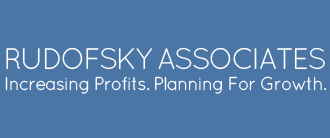Crumbs Investor Presentation Looks Good Enough to Eat
Crumbs Bake Shop, which was founded in 2003 by wife-and-husband team Mia and Jason Bauer, hopes to see their company stock soon listed on the NASDAQ exchange – quite an achievement coming at the tail end of the recent recession.
The 2/8/11 Crumbs investor presentation is as nicely laid out as the Crumbs store I visited earlier this week, and a must-see document for any would-be restaurant owner who is thinking about writing a business plan. At first glance, I was amazed by the degree of disclosure of their business strategy, and key metrics.
Crumbs’ business model may wind up being just as delicious for investors as their cupcakes are for consumers. By baking their cupcakes off-premises, the average build-out cost of a Crumbs location is held to $300,000, while their average ticket (i.e., sales per transaction) of $18-20 translates to average sales per location of $1.1 million, for an average 16-month cash payback on each new location. And with an average EBITDA per store of $231,000, their cash-on-cash return on that $300,000 build-out cost is a tasty 77%.
The vehicle for taking Crumbs public is 57th Street Acquisition Corp, which already trades over-the-counter, and in January announced plans to acquire Crumbs as soon as this month, which would be the final step of a reverse merger. The Crumbs investor document projects that at closing, 55% of Crumbs stock will be owned by the public, 40% by current Crumbs management, and 5% by 57th Street sponsors. The deal structure is less easy to understand than the store economics, and I noticed from the investor document that a considerable number of contingent shares are being created which would be issued once the stock price reaches certain future targets, which could serve to dilute public investors’ returns. And at $31 million of (unaudited) 2010 revenue, Crumbs is on the small size to be a publicly traded company, although it projects it will be at $85-90 million of revenue by 2012, and be at 200 units by 2014.
So with cupcakes coming in three different sizes: “taste”, “classic” and “signature”, hopefully there will be enough Crumbs to go around on a post-IPO basis to make everybody satisfied.



